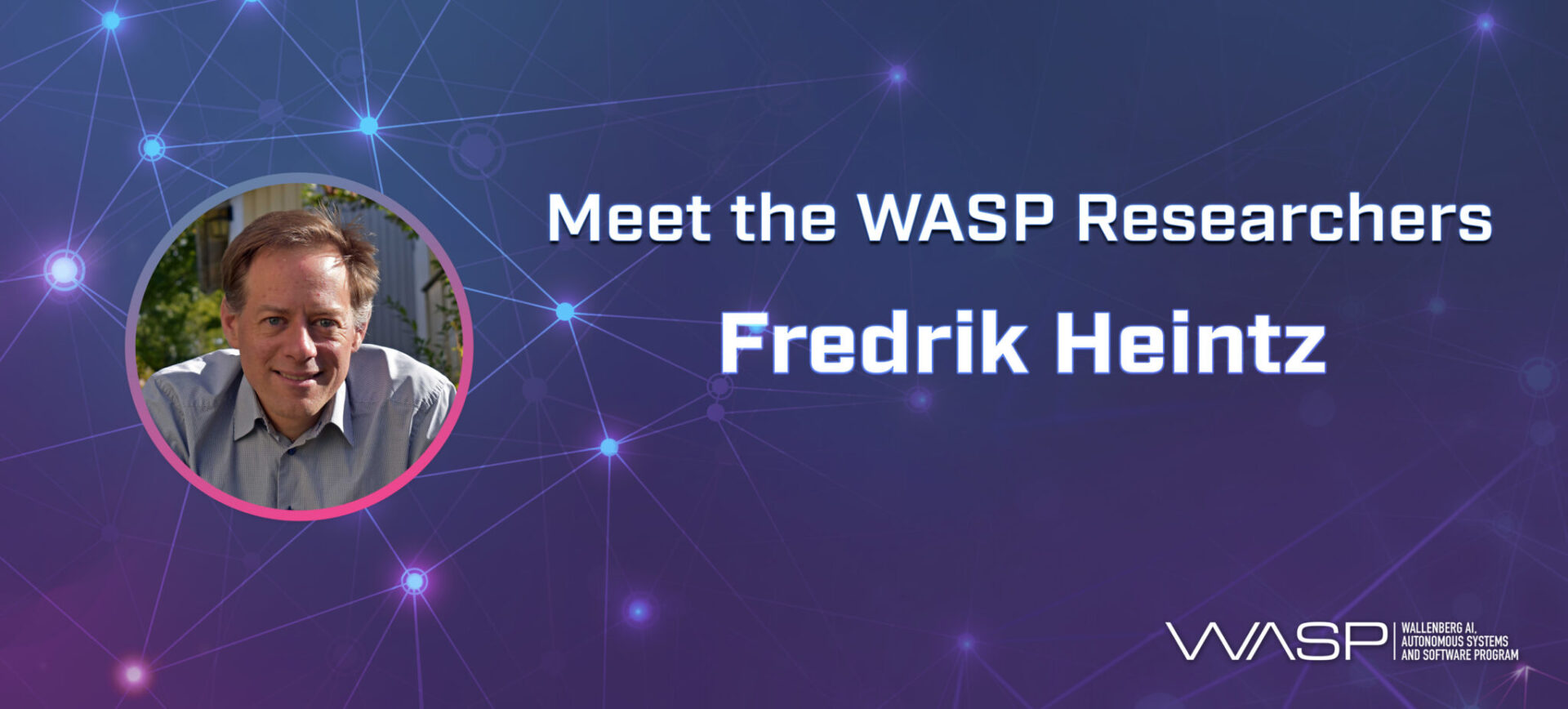WASP is very proud to have so many excellent researchers involved in the program. More than 450 researchers, reaching from assistant to senior professors, are affiliated with WASP. Some are international recruitments who have come to Sweden to join the WASP community, others are already well established in the Swedish academic system.
Through a series of portraits, you get the opportunity to get to know them a little bit better.
Meet Fredrik Heintz
Fredrik Heintz is a Professor at the Department of Computer and Information Science at Linköping University. Professor Heintz has been part of WASP since the start (2015).
What is your position/role in WASP?
WASP Graduate School Director and member of the Research Management Group for AI/MLX, the Arena Management Group, and the Executive Committee. I am also a WASP PI and supervisor of WASP affiliated PhD students.
Program Director of the WASP Education Development program (WASP-ED).
Why did you choose to join WASP?
I was part of the team writing the application and was asked to be the Graduate School Director from the start. Accepting has been a career-changing decision.
What are the benefits you see in WASP?
Being part of building up the largest research program in Sweden gives you a boost in your career. The WASP funding is quite large and long term, which makes it a very good funding source. It is also an important network with great researchers with strong global connections. Being part of WASP will provide value throughout your whole career.
Briefly describe your research topic.
We do a broad range of research in the area of AI, especially the combination of reasoning and learning techniques for safe and trustworthy AI. We also have a long history of developing AI techniques for autonomous systems, including building fully autonomous unmanned aircraft systems. We are pragmatic and like to apply our research in real world applications. We focus on novel research with high value to industry and society.
One example is the research of my WASP PhD student, Fredrik Präntare, on Utilitarian Combinatorial Assignment which is very impressive! See for example:
- Präntare, F., Appelgren, H., Tiger, M., Bergström, D., and Heintz, F.: Learning Heuristics for Combinatorial Assignment by Optimally Solving Subproblems. AAMAS 2022: 1074-1082.
Another example is the research on multi-objective reinforcement learning that I am doing with my WASP industrial PhD student Johan Källström. By learning a multi-objective policy it is possible to provide much more flexibility to the agents so that they can adapt their behavior at run-time without further training. Together with leading researchers in the field we have also argued against Deep Mind that scalar rewards are not enough, real world problems naturally have multiple dimensions and by selecting a single weight vector to transform them into a scalar value will not let us address important challenges such as finding good trade-offs to complex problems with no clear best answer. See for example:
- Hayes, C.F., Rădulescu, R., Bargiacchi, E. et al. A practical guide to multi-objective reinforcement learning and planning. Auton Agent Multi-Agent Syst 36, 26 (2022).
- Vamplew, P., Smith, B.J., Källström, J. et al. Scalar reward is not enough: a response to Silver, Singh, Precup and Sutton (2021). Auton Agent Multi-Agent Syst 36, 41 (2022).
In what way can your research be of importance to our society in the future?
In general, AI will most likely be part of the solution for every major problem our society faces. The techniques that we develop are designed to contribute to making AI safer and more trustworthy. We also develop techniques, such as the work together with Präntare, for how to form effective teams and assign tasks to them so that all the tasks are performed with the highest quality. The research done with Källström provides the basis for advanced training systems where a human can train against and together with sophisticated and adapted computer-generated agents to maximize the quality of the training.
Another example is the research done together with Mattias Tiger who defended his PhD thesis December 2021 after being an affiliated WASP PhD student, on how to make autonomous systems safer by incorporating learning and reasoning in a systematic way as part of the navigation. See for example:
- M. Tiger, D. Bergström, A. Norrstig and F. Heintz, “Enhancing Lattice-Based Motion Planning With Introspective Learning and Reasoning,” in IEEE Robotics and Automation Letters, vol. 6, no. 3, pp. 4385-4392, July 2021.
For more information about Professor Heintz, see https://www.ida.liu.se/~frehe08/
Published: April 26th, 2023
[addtoany]


